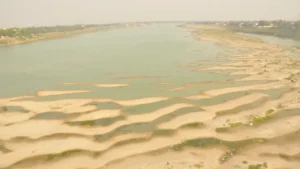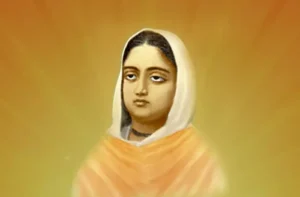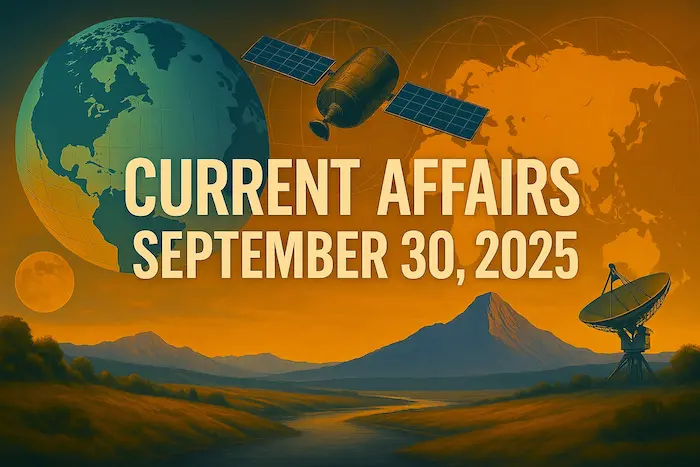1. The Indian Ports Act, 2025 – Economy

Why in News?
The Indian Ports Act, 2025 was enacted in August 2025, replacing the colonial-era Indian Ports Act of 1908. The new Act introduces a modern legal and institutional framework aimed at enhancing the efficiency, sustainability, and global competitiveness of India’s port sector.
Key Features of the Act
Comprehensive Legal Framework
Integrates port law, tariff regulation, safety norms, environmental standards, and Centre-State coordination.
Complements the Merchant Shipping Act, 2025 and Carriage of Goods by Sea Act, 2025, forming part of broader maritime reforms.
Role of Maritime State Development Council (MSDC)
A statutory consultative body to advise on:
National port strategy
Tariff transparency
Data standards
Connectivity and logistics planning
Promotes coordination between Centre and coastal States.
Establishment of State Maritime Boards
All coastal States are mandated to set up or recognize a State Maritime Board within 6 months.
These Boards will:
License and regulate non-major ports
Set tariffs
Ensure safety and environmental compliance
Oversee port development and operational standards
Tariff Regulation
Major Ports: Tariffs fixed by their respective Port Authority Boards.
Non-Major Ports: Tariffs set by State Maritime Boards or private concessionaires.
All tariffs must be electronically published for transparency.
Dispute Resolution Mechanism
States must set up Dispute Resolution Committees (DRCs).
Appeals can be made to the respective High Courts.
Arbitration and Alternative Dispute Resolution (ADR) options are encouraged.
Environmental and Safety Norms
Mandatory provisions for:
Waste management
Pollution control
Ballast water treatment
Disaster preparedness
Penalties for non-compliance ensure environmental accountability.
Scope and Applicability
Applies to all existing and future ports, navigable waters, and vessels within port limits.
Excludes ports exclusively used by:
Armed Forces
Coast Guard
Customs operations
Significance for India
Modernizes a 117-year-old law to meet present-day maritime and trade needs.
Promotes ease of doing business by streamlining port governance.
Enhances India’s positioning as a logistics and maritime hub in line with Sagarmala and Blue Economy initiatives.
Encourages investment in both major and non-major ports, especially in coastal states like Gujarat, Maharashtra, Tamil Nadu, and Andhra Pradesh.
Lays groundwork for a competitive and sustainable maritime sector.
Exam Connect – Possible Questions
Prelims
1. The Indian Ports Act, 2025 replaced which of the following legislations?
A. Merchant Shipping Act, 1958
B. Carriage of Goods by Sea Act, 1925
C. Indian Ports Act, 1908
D. Port Authorities Act, 1995
Answer: C. Indian Ports Act, 1908
2. Which of the following is NOT a feature of the Indian Ports Act, 2025?
A. Establishment of Dispute Resolution Committees
B. Exemption for ports used by the Armed Forces
C. Tariff setting only by the Central Government
D. Mandated environmental compliance by ports
Answer: C. Tariff setting only by the Central Government
Mains
1. The Indian Ports Act, 2025 is a major reform in India’s maritime governance. Discuss how the Act addresses issues of decentralization, environmental sustainability, and investment promotion in India’s port sector. (250 words)
2. India’s logistics efficiency depends heavily on port infrastructure. Analyze the significance of the Indian Ports Act, 2025 in the context of India’s ambitions to become a global trade hub. (250 words)
2. National Security Act (NSA), 1980 – Polity

Why in News?
Renowned climate activist Sonam Wangchuk has been detained under the National Security Act (NSA) in Leh, Ladakh. He has been advocating for statehood and constitutional safeguards under the Sixth Schedule for the region.
Key Facts about the National Security Act (NSA), 1980
Date Enacted: 23rd September 1980
Territorial Extent: Applicable throughout India. Earlier, it did not apply to Jammu & Kashmir, but now does post the abrogation of Article 370.
Constitutional Basis
Article 22(3)(b): Preventive detention laws exempt from protection under Article 22(1) and 22(2).
Article 22(4): Allows preventive detention for up to 3 months without Advisory Board review.
Objectives of the Act
To provide for preventive detention in the interest of:
Defence of India
Security of the state
Public order
Foreign relations
Maintenance of essential supplies and services
Regulation of foreigners
Grounds for Detention
An individual can be detained if their activities are:
Prejudicial to India’s defence or national security
Disruptive to public order
Threatening to foreign relations
Affecting essential services or supplies
In violation of immigration regulations
Authorities Empowered to Act
Central Government
State Governments
District Magistrates (DMs)
Commissioners of Police (if authorized)
Duration and Detention Procedure
Detention can be up to 12 months.
Grounds of detention must be communicated within 5 days, extendable up to 15 days.
A person can be detained for up to 10 days without being told the grounds for arrest.
Advisory Board Mechanism
Composed of three members qualified to be High Court judges.
Reviews detention within 3 weeks of arrest.
If the Board finds insufficient cause, the person must be released immediately.
Historical Context
The NSA builds upon earlier colonial and post-colonial preventive detention laws:
Bengal Regulation III (1818)
Rowlatt Acts (1919)
Preventive Detention Act (1950)
The NSA was reintroduced in 1980 by Prime Minister Indira Gandhi after the lapse of the previous preventive detention law.
Exam Connect – Possible Questions
Prelims
1. The National Security Act, 1980 allows preventive detention for a maximum period of:
A. 6 months
B. 9 months
C. 12 months
D. 3 months
Answer: C. 12 months
2. Under the National Security Act, who among the following can authorize detention?
A. Only the Central Government
B. Only the Supreme Court
C. District Magistrates and Police Commissioners (if empowered)
D. President of India
Answer: C. District Magistrates and Police Commissioners (if empowered)
Mains
1.Discuss the constitutional validity of preventive detention in India. How does the National Security Act, 1980 balance individual liberty with national security? (250 words)
2.With reference to recent events in Ladakh, critically examine the use of the National Security Act against civil society activists. Do you think it threatens democratic dissent? Substantiate your answer. (250 words)
3. Ganga River is Drying Faster than in 1,300 Years – Environment

Why in News?
A recent study by researchers from IIT Gandhinagar and the University of Arizona reveals that the Ganga River is drying at an unprecedented rate, faster than any time in the last 1,300 years. This trend has alarming implications for water security, agriculture, and ecosystems in India.
Key Findings from the Study
Streamflow Reconstruction: Using tree-ring data and hydrological modeling, scientists reconstructed Ganga’s streamflow from 700 AD to the present.
Historic Correlation: The study validated its accuracy by matching historic droughts and famines, including the Bengal Famine.
Post-1990 Drying Trend:
Multiple 4–7-year droughts occurred between 1991 and 2020.
The 2004–2010 drought was the most severe in over a millennium.
Drying since the 1990s is 76% more intense than the worst 16th-century drought.
Causes of Ganga’s Drying
| Factor | Explanation |
|---|---|
| Weaker Monsoons | Caused by Indian Ocean warming and aerosol pollution, reducing rainfall. |
| Over-extraction of Groundwater | Depletes baseflow, which is the primary source of dry-season river water. |
| Land-use Changes | Urbanization, deforestation, and agriculture affect the natural recharge cycle of the river system. |
Implications of the Drying Trend
Human Impact:
Affects 600 million people who depend on the river for drinking, irrigation, and livelihoods.
Disrupts agriculture in the Indo-Gangetic Plain, a major food-producing region.
Economic Impact:
The Ganga Basin contributes to 40% of India’s GDP.
Water scarcity may disrupt fisheries, trade, and energy sectors.
Ecological Impact:
Threatens Bay of Bengal ecosystems and aquatic biodiversity.
Affects critical wildlife habitats such as the Sundarbans, Corbett, and Dudhwa reserves.
About the Ganga River
| Feature | Description |
|---|---|
| Length | ~2,525 km (Longest river in India) |
| Origin | Gangotri Glacier, Uttarakhand (Elevation: 3,892 m) |
| Formation | Becomes Ganga at Devprayag, where Bhagirathi meets Alaknanda |
| States Covered | Uttarakhand, Uttar Pradesh, Bihar, Jharkhand, West Bengal |
| Entry into Bangladesh | As the Padma River, before draining into the Bay of Bengal |
| Basin Area | ~8.61 lakh sq. km (26.4% of India’s area) |
| Population | Supports over 600 million people |
| Declared National River | In 2008, due to its cultural and ecological significance |
Major Tributaries of the Ganga
Left Bank: Ramganga, Gomti, Ghaghara, Gandak, Burhi Gandak, Koshi, Mahananda
Right Bank: Yamuna, Tons, Sone, Karamnasa, Punpun, Falgu, Kiul, Ajoy, Damodar, Rupnarayan
Cultural, Ecological & Economic Importance
Sacred Status: Worshipped as a goddess, site of numerous pilgrimage centres.
Economic Lifeline: Crucial for agriculture, fisheries, and industry.
Biodiversity Hotspot:
Supports species like the Ganga River Dolphin, Snow Leopard, and Asian Elephant.
Contains important reserves: Sundarbans, Corbett, Rajaji, and Dudhwa.
Conservation Efforts
| Programme | Objectives |
|---|---|
| Ganga Action Plan (1985) | Focused on reducing pollution, improving sewage treatment, but faced implementation challenges. |
| Namami Gange (2014) | Integrated mission for river rejuvenation, pollution control, afforestation, and public participation. |
Exam Connect – Possible Questions
Prelims
1. The Ganga River is declared as the “National River” of India in which year?
A. 1985
B. 2000
C. 2008
D. 2014
Answer: C. 2008
2. Which of the following is a right-bank tributary of the Ganga River?
A. Gomti
B. Gandak
C. Yamuna
D. Mahananda
Answer: C. Yamuna
Mains
1. Discuss the environmental and socio-economic consequences of the drying of the Ganga River. Suggest policy measures for sustainable water management in the Ganga Basin. (250 words)
2. The recent findings on the Ganga’s drying trend raise concerns about long-term water security in India. Examine the key reasons for the reduction in streamflow and evaluate the effectiveness of current river conservation initiatives. (250 words)
4. India’s First Space Observatory Completes 10 Years – Science and Technology

Why in News?
AstroSat, India’s first multi-wavelength space observatory, completed 10 years of operation on September 28, 2025, marking a major milestone in India’s progress in multi-messenger astronomy.
Key Highlights
Launched: September 28, 2015, by PSLV-C30 from Sriharikota.
Intended Life: 5 years, but still operational after 10 years.
Managed by: Mission Operations Complex (MOX), ISTRAC, Bengaluru.
Mission Objective: To perform simultaneous multi-band observations of celestial sources across ultraviolet (UV), optical, and X-ray spectra.
What is Multi-Messenger Astronomy?
A cutting-edge field in astrophysics that uses multiple cosmic messengers to study celestial phenomena, offering a comprehensive understanding of the universe.
| Messenger | Source/Event |
|---|---|
| Photons (Light) | Stars, galaxies, supernovae (UV, X-ray, gamma rays, visible light) |
| Gravitational Waves | Black hole/neutron star mergers |
| Neutrinos | Nuclear reactions in stars, supernovae |
| Cosmic Rays | Charged particles from distant cosmic sources |
AstroSat’s Instruments (Payloads)
| Instrument | Function |
|---|---|
| UVIT (Ultraviolet Imaging Telescope) | High-resolution imaging in UV and visible light |
| LAXPC (Large Area X-ray Proportional Counter) | Studies variability in X-ray sources |
| SXT (Soft X-ray Telescope) | Observes soft X-rays from cosmic sources |
| CZTI (Cadmium-Zinc-Telluride Imager) | Detects hard X-rays and gamma-ray bursts |
| SSM (Scanning Sky Monitor) | Monitors transient X-ray sources |
Major Achievements of AstroSat
Black Hole Research: Documented over 500 black hole formations.
Distant Galaxy Detection: Detected extreme UV light from a galaxy 9.3 billion light-years away — aiding study of the early universe.
Gamma-Ray Bursts: Studied 500+ gamma-ray bursts using the CZTI instrument.
UV-Bright Stars: Identified rare, extremely bright UV stars in the Milky Way, some shining thousands of times brighter than the Sun.
Longevity: Operating well beyond its expected lifespan, continuously supplying valuable scientific data.
Significance of AstroSat
Places India among a handful of countries with multi-wavelength observatories in space.
Enhances India’s role in global astrophysics and space science collaboration.
Serves as a platform for cutting-edge research, contributing to India’s aspirations in space diplomacy and innovation.
Offers data for Indian and international astronomers, promoting scientific capacity-building.
Exam Connect – Possible Questions
Prelims
1. Which of the following payloads on AstroSat is primarily used for observing gamma-ray bursts?
A. UVIT
B. LAXPC
C. CZTI
D. SSM
Answer: C. CZTI
2. Multi-messenger astronomy includes which of the following messengers?
1. Photons
2. Neutrinos
3. Gravitational Waves
4. Cosmic Rays
Choose the correct answer:
A. 1 and 2 only
B. 2 and 3 only
C. 1, 2, and 3 only
D. 1, 2, 3, and 4
Answer: D. 1, 2, 3, and 4
Mains
1. AstroSat has positioned India as a significant contributor to multi-messenger astronomy. Discuss the scientific achievements of AstroSat and their implications for India’s space research capabilities. (250 words)
2.Explain the concept of multi-messenger astronomy. How does India’s AstroSat mission contribute to this emerging field? Evaluate its importance for global and national scientific collaboration. (250 words)
5. Corporate Average Fuel Efficiency (CAFE) 3 Norms – Revamp in Vehicle Emissions Framework – Economy

Why in News?
India has introduced draft Corporate Average Fuel Efficiency (CAFE) 3 norms via the Bureau of Energy Efficiency (BEE). These proposed regulations aim to:
Strengthen fuel efficiency standards,
Align Indian norms with global benchmarks, and
Offer incentives for small cars and electric vehicles (EVs).
Background: What is CAFE?
Introduced: In 2017 by BEE (under the Ministry of Power).
Purpose: Regulates fuel consumption and CO₂ emissions of passenger vehicles to:
Reduce oil dependency,
Combat air pollution, and
Encourage cleaner automotive technologies.
Applies to: All passenger vehicles (petrol, diesel, LPG, CNG, hybrids, and EVs) weighing less than 3,500 kg.
Progression of CAFE Norms
| Version | Year | CO₂ Emission Target | Fuel Efficiency |
|---|---|---|---|
| CAFE 1 | 2017 | 130 g/km | ~5.49 litres/100 km |
| CAFE 2 | 2022-23 | 113 g/km | ~4.78 litres/100 km |
| CAFE 3 (Draft) | 2025 onward | Stricter & globally aligned | Formula-based |
Need for CAFE 3 Norms
Current norms inadvertently favor SUVs over small cars.
India’s emission framework lags behind global standards.
There’s a need to revive small car sales and boost EV adoption.
Supports India’s push towards net-zero emissions and sustainable mobility.
Key Features of CAFE 3 Norms
| Feature | Description |
|---|---|
| Scope | Applies to M1-category vehicles (up to 9 seats and 3,500 kg GVW) |
| Efficiency Target Formula | Efficiency (L/100 km) = 0.002 × (Weight – 1170) + constant (c) |
| Super Credits | EVs, hybrids and alternate fuel vehicles earn bonus credits, counting more favorably towards compliance |
| Carbon Neutrality Factor (CNF) | Adjusts targets based on fuel type, promoting cleaner fuels |
| Relaxation for Small Cars | Extra flexibility in CO₂ limits for small petrol cars to stimulate sales |
| Emissions Pooling | Auto companies can form pools to jointly meet targets—reduces costs and encourages industry collaboration |
| Legal Backing | Non-compliance penalized under the Energy Conservation Act, 2001 |
Potential Impact of CAFE 3 Norms
Positive Implications
Reduced oil import dependency
Incentivizes green mobility, EVs, and fuel-efficient vehicles
Boosts affordability and market demand for small cars
Aligns India with global emission benchmarks
Challenges
High industry adaptation cost
Low EV infrastructure readiness
Consumer hesitation toward new fuel types
Risk of passing compliance costs to buyers
Exam Connect – Possible Questions
Prelims
1. The Corporate Average Fuel Efficiency (CAFE) norms in India are enforced by which agency?
A. NITI Aayog
B. Ministry of Road Transport and Highways
C. Bureau of Indian Standards
D. Bureau of Energy Efficiency (BEE)
Answer: D. Bureau of Energy Efficiency (BEE)
2. The CAFE norms apply to which of the following vehicle categories in India?
A. All commercial trucks
B. Passenger vehicles under 3,500 kg gross vehicle weight
C. Two-wheelers only
D. Only hybrid and electric vehicles
Answer: B. Passenger vehicles under 3,500 kg gross vehicle weight
Mains
1.Discuss the role of Corporate Average Fuel Efficiency (CAFE) norms in promoting sustainable transportation in India. Evaluate the challenges in implementing the proposed CAFE 3 norms. (250 words)
2.The Indian automotive sector is undergoing a transition towards cleaner technologies. How do the CAFE 3 norms support this transition? Suggest additional policy measures to ensure long-term fuel efficiency and emission reduction. (250 words)
6. Rani Rashmoni (1793–1861) – Trailblazer of 19th-Century Bengal – History & Culture

Why in News?
On 28th September 2025, the Prime Minister paid tribute to Rani Rashmoni on her birth anniversary, recognizing her as a symbol of women’s leadership, social reform, and cultural legacy in 19th-century Bengal.
Who was Rani Rashmoni?
A prominent zamindar, businesswoman, social reformer, and philanthropist in British India.
Known for her strong administrative leadership, spiritual devotion, and courageous opposition to colonial policies.
Revered as “Lokmata” (Mother of the People) for her compassion and public service.
Key Personal Details
| Attribute | Description |
|---|---|
| Born | 28 September 1793 in Halisahar, Bengal |
| Married | At age 11, to Raja Raj Chandra Das, a wealthy zamindar of Janbazar, Kolkata |
| Took Charge | Managed estate and businesses after husband’s death in 1836, a rare feat for a woman of that era |
Major Contributions
Religious and Cultural Patronage
Built the Dakshineswar Kali Temple (1847–1855) – a major religious site on the banks of the Hooghly River.
Appointed Sri Ramakrishna Paramahamsa as head priest, defying caste-based criticism.
Promoted inclusive worship, allowing access to people from all castes and social backgrounds.
Social Reforms
Opposed polygamy and child marriage.
Supported widow remarriage.
Submitted a draft bill to British authorities for banning polygamy — a rare political step by an Indian woman at the time.
Public Welfare and Infrastructure
Funded construction of ghats on the Ganga, such as:
Babughat
Ahiritola Ghat
Nimtala Ghat
Commissioned roads, reservoirs, and resting houses for travelers.
Support for Education and Culture
Contributed to:
Imperial Library (now National Library of India)
Hindu College (now Presidency University)
Established schools for women and marginalized communities, promoting inclusive education.
Resistance to British Rule
Protested British fishing taxes on the Hooghly by blocking river traffic — a successful act of civil resistance.
Defied colonial restrictions on public Durga Puja processions.
Legacy and Relevance
An early woman leader who balanced spiritual patronage, political resistance, and grassroots reform.
Inspired generations of women reformers, including figures of the Bengal Renaissance.
Embodies the intersection of cultural preservation, social change, and resistance to colonial injustice.
Exam Connect – Possible Questions
Prelims
1. Rani Rashmoni was associated with which of the following major temples?
A. Kalighat Temple
B. Belur Math
C. Dakshineswar Kali Temple
D. Kamakhya Temple
Answer: C. Dakshineswar Kali Temple
2. Rani Rashmoni opposed which of the following colonial impositions?
A. Salt tax
B. Fishing tax on the Hooghly River
C. Indigo plantation laws
D. Arms Act
Answer: B. Fishing tax on the Hooghly River
Mains
1. Rani Rashmoni is remembered as both a spiritual patron and a social reformer. Examine her role in 19th-century Bengal’s cultural and political landscape. (250 words)
2. Women played a significant yet often underrepresented role in India’s pre-independence reform movements. Discuss with reference to the contributions of Rani Rashmoni. (250 words)

